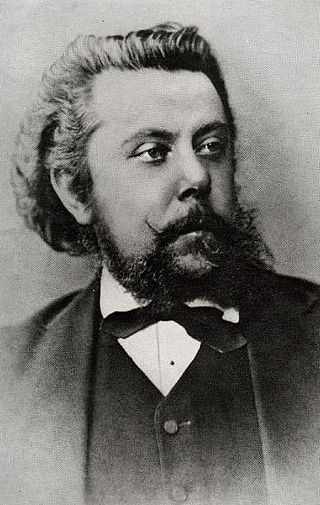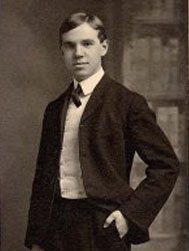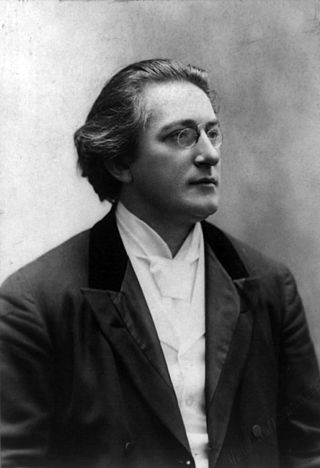Other arrangements of Lyric Pieces
In 1899, Grieg orchestrated two of the pieces from Book IX, Op. 68.
- No. 4 Evening in the Mountains was set for oboe, horns and strings.
- No. 5 At the Cradle was set for strings alone.
Edvard Grieg's Lyric Suite is an orchestration of four of the six piano pieces from Book V of his Lyric Pieces , Op. 54. Both Grieg and the Austro-Hungarian conductor Anton Seidl had a hand in the orchestration. It consists of three pieces revised by Grieg from Seidl's arrangements, and one piece arranged by Grieg alone.
Grieg wrote the six Lyric Pieces of Book V for piano in 1891. The original order was:
In 1894, Anton Seidl, the conductor of the New York Philharmonic, orchestrated four of the pieces for his orchestra to play. He gave the work the title of Norwegian Suite. The four pieces he chose were:
Seidl died in 1898. In 1905, with the assistance of Daniela Thode (1860–1940; the daughter of Cosima Wagner by her first husband Hans von Bülow, and the grand-daughter of Franz Liszt), Grieg obtained the score of Seidl's arrangement but was dissatisfied with it in some respects. He wrote to Seidl's widow, saying that, while her late husband's work had considerable merit, it did not fully accord with his own conception of the pieces, and he had therefore revised Seidl's orchestrations. [1] [2] Seidl had worked alongside Richard Wagner for a number of years, making the first copy of the score of Der Ring des Nibelungen , and conducting the Ring Cycle many times in Germany and America. He was undoubtedly influenced by Wagner's heavy Germanic instrumentation, which did not fit well with Grieg's lighter, more subtle and folkloristic approach.
Grieg gave his revised arrangement the title of Lyric Suite. Although he did complete his revision of Seidl's arrangement of No. 6 Bell-Ringing, he chose not to include it. Instead, he orchestrated the first piece, Shepherd Boy, directly from the original piano score, and included it in the suite. [3] The other three pieces were set for full orchestra, but Shepherd Boy was arranged for strings alone.
Grieg slightly altered the order of the numbers in the orchestral suite by swapping No. 4 Notturno with No. 3 March of the Dwarfs. The final order is:
He conducted the Lyric Suite a number of times in the two remaining years of his life, and it has been recorded and performed many times by other conductors.
Seidl's Norwegian Suite has not survived in the repertoire. The score is now part of the Seidl Collection at Columbia University Library.
In 1899, Grieg orchestrated two of the pieces from Book IX, Op. 68.



Edvard Hagerup Grieg was a Norwegian composer and pianist. He is widely considered one of the leading Romantic era composers, and his music is part of the standard classical repertoire worldwide. His use of Norwegian folk music in his own compositions brought the music of Norway to fame, as well as helping to develop a national identity, much as Jean Sibelius did in Finland and Bedřich Smetana in Bohemia.

Orchestration is the study or practice of writing music for an orchestra or of adapting music composed for another medium for an orchestra. Also called "instrumentation", orchestration is the assignment of different instruments to play the different parts of a musical work. For example, a work for solo piano could be adapted and orchestrated so that an orchestra could perform the piece, or a concert band piece could be orchestrated for a symphony orchestra.

A nocturne is a musical composition that is inspired by, or evocative of, the night.

A string orchestra is an orchestra consisting solely of a string section made up of the bowed strings used in Western Classical music. The instruments of such an orchestra are most often the following: the violin, which is divided into first and second violin players, the viola, the cello, and usually, but not always, the double bass.

Pictures at an Exhibition is a piano suite in ten movements, plus a recurring and varied Promenade theme, written in 1874 by Russian composer Modest Mussorgsky. It is a musical depiction of a tour of an exhibition of works by architect and painter Viktor Hartmann put on at the Imperial Academy of Arts in Saint Petersburg, following his sudden death in the previous year. Each movement of the suite is based on an individual work, some of which are lost.
Johan Halvorsen was a Norwegian composer, conductor and violinist.

The Piano Concerto in A minor, Op. 16, composed by Edvard Grieg in 1868, was the only concerto Grieg completed. It is one of his most popular works, and is among the most popular of the genre. Grieg, being only 24 years old at the time of the composition, had taken inspiration from Robert Schumann's only concerto, also being in A minor.

Charles Tomlinson Griffes was an American composer for piano, chamber ensembles and voice. His initial works are influenced by German Romanticism, but after he relinquished the German style, his later works make him the most famous American representative of musical Impressionism, along with Charles Martin Loeffler. He was fascinated by the exotic, mysterious sound of the French Impressionists, and was compositionally much influenced by them while he was in Europe. He also studied the work of contemporary Russian composers such as Scriabin, whose influence is also apparent in his use of synthetic scales.

John Milford Rutter is an English composer, conductor, editor, arranger, and record producer, mainly of choral music.

Lyric Pieces is a collection of 66 short pieces for solo piano written by Edvard Grieg. They were published in 10 volumes, from 1867 to 1901. The collection includes several of his best known pieces, such as Wedding Day at Troldhaugen, To Spring, March of the Trolls (Trolltog), and Butterfly (Sommerfugl).

Alexander Nikolayevich Tcherepnin was a Russian-born composer and pianist.

Anton Seidl was a Hungarian conductor, best known for his collaboration with Richard Wagner and conducting his operas, and for his association with the Metropolitan Opera in New York City and the New York Philharmonic.
The Bergen Philharmonic Orchestra is a Norwegian orchestra based in Bergen. Its principal concert venue is the Grieg Hall.
Walter Sinclair Hartley was an American composer of contemporary classical music.

Lucijan Marija Škerjanc was a Slovene composer, music pedagogue, conductor, musician, and writer who was accomplished on and wrote for a number of musical instruments such as the piano, violin and clarinet. His style reflected late romanticism with qualities of expressionism and impressionism in his pieces, often with a hyperbolic artistic temperament, juxtaposing the dark against melodic phrases in his music.

Harold Boatrite was an American composer.
Jonathan Alfred Clawson Redford is an American composer, arranger, orchestrator, and conductor. He is also the author of Welcome All Wonders: A Composer's Journey.

Theo Verbey was a Dutch composer.
Thomas Christopher Kelly was an Irish composer, teacher and conductor.
Two Elegiac Melodies, Op. 34, is a composition in two movements for string orchestra by Edvard Grieg, completed in 1880 and first published in 1881.